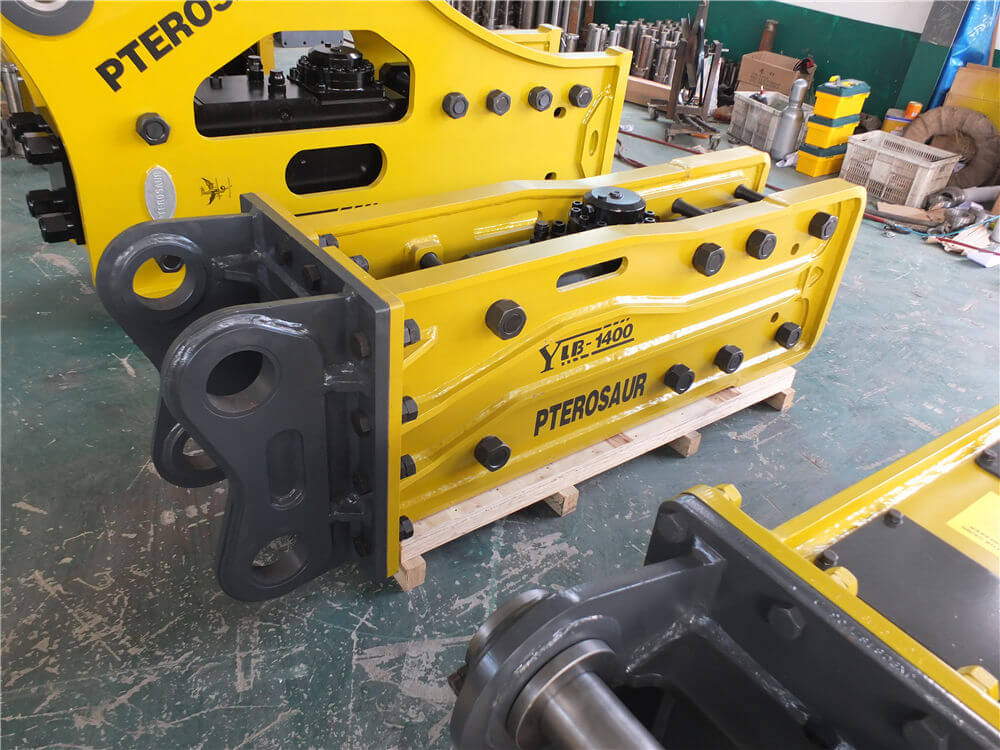The Power of Hydraulic Breakers for Excavators: A Comprehensive Guide
Hydraulic breakers are essential attachments for excavators, designed to enhance the efficiency of breaking rock and concrete in various construction and demolition projects. They provide powerful, versatile solutions for a range of applications, from primary rock excavation to the demolition of massive structures. This article explores the different types of hydraulic breakers available, their applications, and tips for optimizing their performance.
Understanding Hydraulic Breakers
Hydraulic breakers, also known as rock breakers or hammers, are impact devices that use hydraulic power to generate a high-frequency blow. They are typically mounted on excavators and can break through tough materials such as rock, concrete, and asphalt. The efficiency and productivity of hydraulic breakers are crucial for construction and demolition tasks, making them a valuable asset on any job site.
Types of Hydraulic Breakers
-
Heavy Breakers: These are designed for primary blast-free rock excavation and secondary breaking tasks. They are robust and suitable for construction sites, quarries, and underground mines, making them ideal for heavy-duty applications.
-
Compact Excavator Breakers: These units are specifically tailored for smaller excavators and are used to break concrete, asphalt, and other hard surfaces. Their compact design allows for easy handling and maneuverability in tight spaces.
-
Versatile Impact Devices: Brands like Vanrock produce versatile rock breakers that can handle any type of rock or concrete, regardless of its hardness. They are engineered for a wide range of applications, including demolition, deconstruction, and trenching.
Popular Models of Hydraulic Breakers
-
UBTECH UBT Series: Models such as the UBT30S, UBT20S, and UBT45S are known for their reliability and efficiency. These breakers are designed for various excavator sizes and are suitable for both light and heavy applications.
-
Montana Breakers: These hydraulic breakers combine high operational efficiency with nitrogen gas energy to deliver powerful breaking force. They are effective for both rock and concrete breaking tasks.
Applications of Hydraulic Breakers
Hydraulic breakers are utilized in numerous applications, including:
- Demolition: Breaking down concrete structures and removing debris.
- Excavation: Preparing sites by breaking rock for foundation work.
- Asphalt Cutting: Efficiently cutting through asphalt surfaces for road repairs.
- Trenching: Digging trenches for utility installations and other construction needs.
Tips for Maximizing Breaker Performance
To get the most out of your hydraulic breaker, consider the following tips:
- Regular Maintenance: Ensure regular greasing and maintenance, as this will prolong the life of the breaker and maintain its efficiency.
- Proper Selection: Choose the right size and type of breaker for your excavator and the specific task at hand. A breaker that is too large may cause damage, while one that is too small may not perform effectively.
- Operator Training: Ensure that operators are well-trained in the use of hydraulic breakers to maximize productivity and minimize wear on the equipment.
- Monitor Productivity: Keep track of the amount of material broken per hour to assess the efficiency of the breaker and make adjustments as necessary.
Conclusion
Hydraulic breakers for excavators offer a powerful solution for a variety of construction and demolition tasks. With options ranging from heavy-duty breakers to compact models, there is a suitable hydraulic breaker for every job. By understanding their applications and following maintenance best practices, operators can enhance productivity and ensure successful project completion. Investing in high-quality hydraulic breakers and ensuring proper usage can lead to significant time and cost savings on any construction site.



































